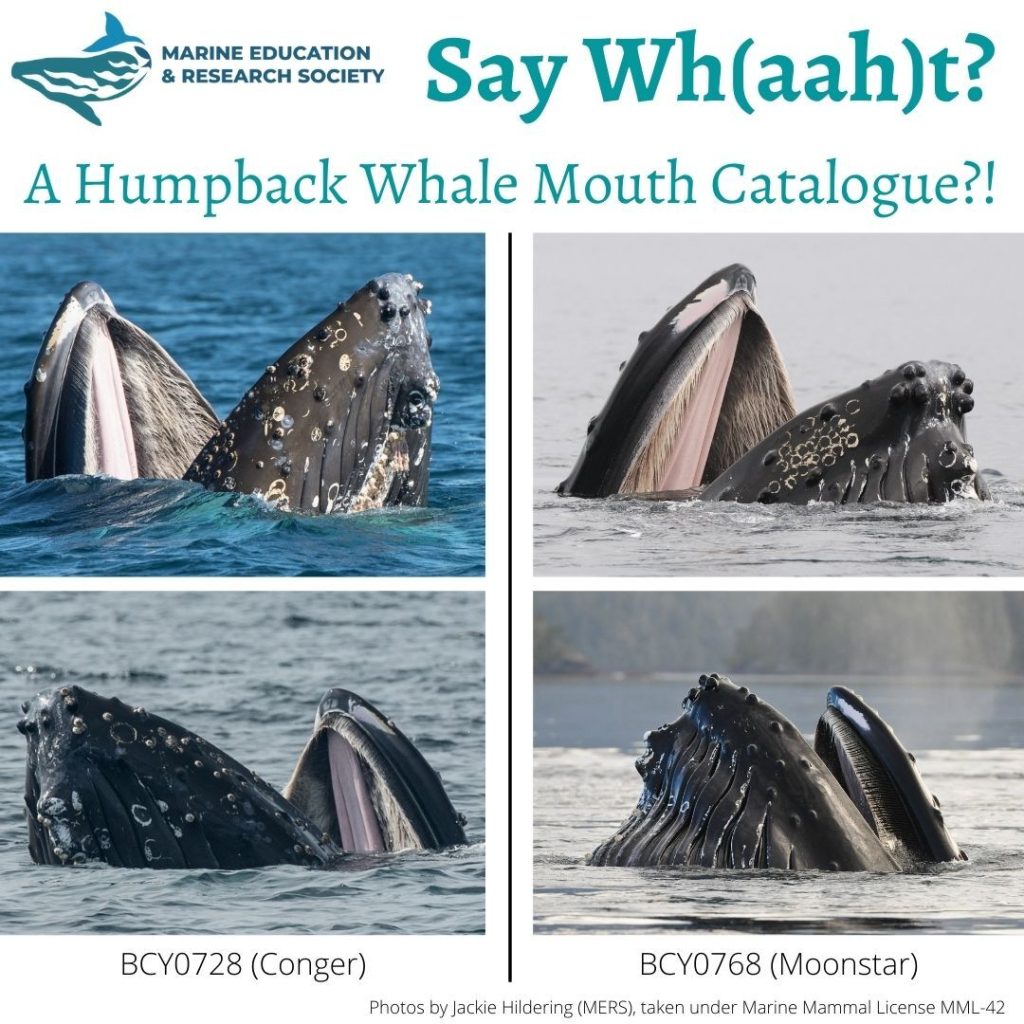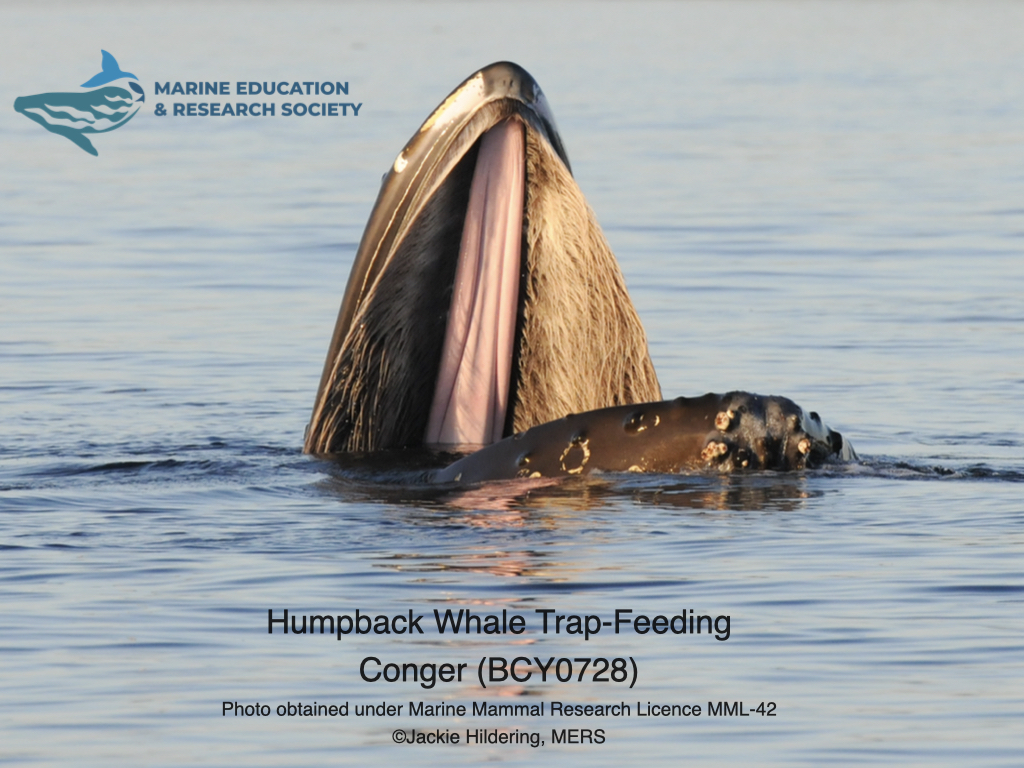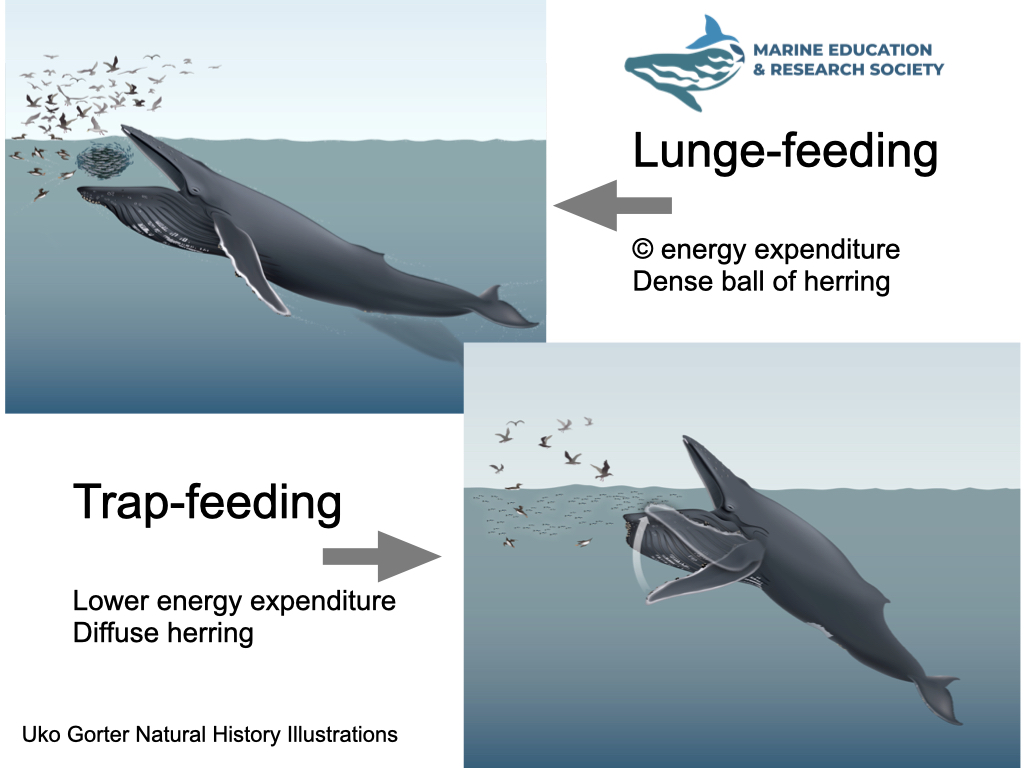[Last update: November 2024]
Our research on Humpback Whale trap-feeding has been published in Marine Mammal Science.
We first documented this novel feeding strategy for 2 individuals around northeast Vancouver Island in 2011. As of November 2024, we know of 34 Humpback Whales who have learned to use this strategy under specific conditions.
Trap-feeding is where some Humpbacks set a trap for juvenile herring when juvenile herring are in small, diffuse schools.
The fish then collect near, or in, the mouth of the Humpback to escape predation by diving birds (most often Common murres and Rhinoceros Auklets).
The Humpbacks then spin and/ or use their pectoral flippers to push the fish into their mouths. This feeding strategy uses less energy than when Humpbacks lunge-feed on greater concentrations of juvenile herring.
Humpbacks are also well known for “bubble-net feeding”. With this strategy, teams of whales work together to coral fish and this includes a member of the team blowing a net of bubbles to stop the fish from escaping.
This is not a strategy employed by Humpbacks around northeast Vancouver Island as the current would dissipate the bubbles. It is a used by Humpbacks around BC’s central coast and further to the north. Only occasionally will individual Humpback Whales around northeast Vancouver Island use bubbles to coral fish (not teams) when there is no current i.e. on slack tide or in a back eddy.
MERS’ research supports that the Humpbacks of northeastern Vancouver Island are lunge-feeding specialists on juvenile herring, with some of the whales having learned this new feeding strategy – “trap-feeding” when the fish are in smaller, less concentrated schools.
When the whales are trap-feeding, it is often very difficult to see their dorsal fins or flukes to identify them. This has led to our compiling a catalogue of their mouths so that we can identify them by the distinctive markings on their jaws.

Abstract from: McMillan, C. J., Towers, J. R. and Hildering, J. (2018), The innovation and diffusion of “trap‐feeding,” a novel humpback whale foraging strategy. Mar Mam Sci. . doi:10.1111/mms.12557
“The innovation and diffusion of novel foraging strategies within a population can increase the capacity of individuals to respond to shifts in prey abundance and distribution. Since 2011, some humpback whales (Megaptera novaeangliae) off northeastern Vancouver Island (NEVI), Canada, have been documented using a new feeding strategy called “trap‐feeding.” We provide the first description of this foraging innovation and explore the ecological and social variables associated with its diffusion using sightings data, video analysis, and logistic regression modeling. The number of humpback whales confirmed to trap‐feed off NEVI increased from two in 2011 to 16 in 2015. Neither the locations of trap‐feeding sessions nor prey species consumed differed from those documented during lunge‐feeding. However, preliminary results indicate that the schools of fish consumed when individuals trap‐fed were smaller and more diffuse than those consumed when whales lunge‐fed. Top‐ranked models predicting whether an individual would be observed exhibiting trap‐feeding behavior included the following parameters: average number of days per year that the individual was seen off NEVI and proportion of the individual’s associations that were with other trap‐feeders. These results suggest that trap‐feeding may be a culturally transmitted foraging innovation that provides an energetically efficient method of feeding on small, diffuse prey patches.”
Below:
Video of trap-feeding where a seal escapes from the Humpback’s mouth.
Below:
Compilation of MERS trap-feeding footage.




